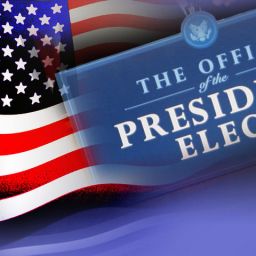The Center for Social Media has posted their Code of Best Practices in Fair Use for Online Video (16 page PDF Report). This Report is a follow-up to the Center’s study, Recut, Reframe, Recycle: Quoting Copyrighted Material in User-Generated Video, that suggested strongly that remix culture is not only socially acceptable, but should also be legally acceptable because transformative reuse falls within the fair use exception/defense to copyright. Helping to shape fair use through best practices rather than through case law is such a good idea and the best practices were well-crafted by its committee (including such heavy hitters as Henry Jenkins, Rebecca Tushnet, and Anthony Falzone).
So why the need for best practices for online video fair use?
video creation and sharing depend on the ability to use and circulate existing copyrighted work… As practices spread and financial stakes are raised, the legal status of inserting copyrighted work into new work will become important for everyone.
It is important for video makers, online service providers, and content providers to understand the legal rights of makers of new culture, as policies and practices evolve. Only then will efforts to fight copyright “piracy” in the online environment be able to make necessary space for lawful, value-added uses.
…the cultural value of copying is so well established that it is written into the social bargain at the heart of copyright law. The bargain is this: we as a society give limited property rights to creators, to reward them for producing culture; at the same time, we give other creators the chance to use that same copyrighted material without permission or payment, in some circumstances. Without the second half of the bargain, we could all lose important new cultural work just because one person is arbitrary or greedy.
…Copyright law does not exactly specify how to apply fair use, and that is to creators’ advantage. Creative needs and practices differ with the field, with technology, and with time. Rather than following a specific formula, lawyers and judges decide whether an unlicensed use of copyrighted material is “fair” according to a “rule of reason.” This means taking all the facts and circumstances into account to decide if an unlicensed use of copyright material generates social or cultural benefits that are greater than the costs it imposes on the copyright owner.
The types of uses considered in the Best Practices are (and there is much more in the Report):
ONE: Commenting or Critiquing of Copyrighted Material
Video makers have the right to use as much of the original work as they need to in order to put it under some kind of scrutiny. …the fact that the critique itself may do economic damage to the market for the quoted work (as a negative review or a scathing piece of ridicule might) is irrelevant. [But] the new use should not become a market substitute for the work (or other works like it).
TWO: Using copyrighted materials for illustration or example
It is fair [use] when video makers are not presenting the quoted material for its original purpose but to harness it for a new one. [But to] the extent possible and appropriate, illustrative quotations should be drawn from a range of different sources; and each quotation (however many may be employed to create an overall pattern of illustrations) should be no longer than is necessary to achieve the intended effect.
THREE: Capturing copyrighted material incidentally or accidentally
Where a sound or image has been captured incidentally and without pre-arrangement, as part of an unstaged scene, it is permissible to use it, to a reasonable extent, as part of the final version of the video.
FOUR: Reproducing, reposting, or quoting in order to memorialize, preserve, or rescue an experience, an event, or a cultural phenomenon
Fair use reaches its limits when the entertainment content is reproduced in amounts that are disproportionate to purposes of documentation, or in the case of archiving, when the material is readily available from authorized sources.
FIVE: Copying, reposting, and recirculating a work or part of a work for purposes of launching a discussion
When content that originally was offered to entertain or inform or instruct is offered up with the distinct purpose of launching an online conversation, … a fundamental goal of the copyright system—to promote the republican ideal of robust social discourse—is served.
SIX: Quoting in order to recombine elements to make a new work that depends for its meaning on (often unlikely) relationships between the elements
The recombinant new work has a cultural identity of its own and addresses an audience different from those for which its components were intended. If a work is merely reused without significant change of context or meaning, [or “where the juxtaposition is a pretext to exploit the popularity or appeal of the copyrighted work employed”] then its reuse goes beyond the limits of fair use.
This is an significant report — and there is much meaty goodness — but the impact is unknown. Will these Best Practices have the same impact as the Center for Social Media’s Best Practices for Documentaries? I previously was concerned about the idea of best practices for remix culture:
I’m unsure about how [best practices] would actually work. The standard for best practices is documentary filmmakers. I’m not sure how much agreement different types of content makers and stakeholders will have in determining what types of uses are truly transformative.
I am still wary about how content owners will act in response — but this is a important step in ensuring fair use continues to be a balance to copyright.



[…] Media’s Code of Best Practices in Fair Use for Online Video (16 page PDF Report), considers cultural memory to be significant enough to be considered when determining the boundaries of fair use: FOUR: Reproducing, reposting, or […]